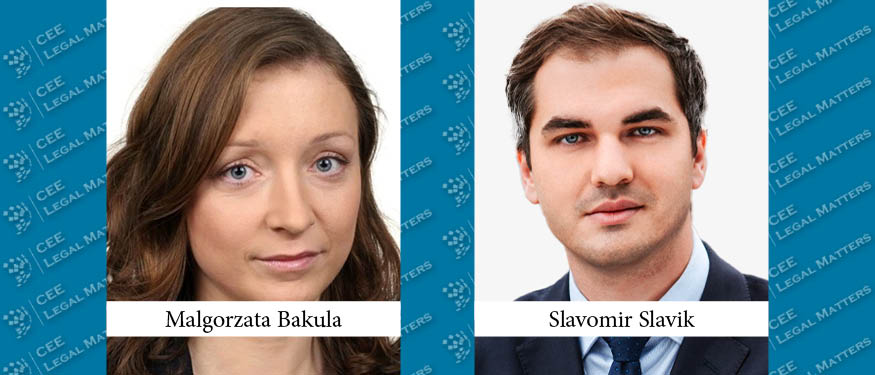The Serbian private healthcare sector – including private healthcare providers and pharmacies – has been on a steady incline over the past several years. BDK Advokati Senior Partner Vladimir Dasic, Prica & Partners Partner Tijana Lalic, and Karanovic & Partners Senior Partner Marjan Poljak take a deep dive into what makes the sector tick and grow.
Private Healthcare Sector – Steady Growth
In Serbia, “publicly available information from 2022 suggests that there were up to around 1,000 healthcare institutions, including pharmacies,” Poljak begins. However, “unofficial information suggests that there were almost 4,000 pharmacies in total throughout the country in 2022, including all branches of private pharmacies as well.”
“Both hospitals and pharmacies are legally treated as healthcare providers,” Lalic clarifies, adding that “generally, it appears that private healthcare has been growing in Serbia in recent years, especially in terms of healthcare institutions” while, in terms of private pharmacies, she says their number is already strong. However, Lalic notes that “data on the exact market share of private health care sector is not publicly available.”
Dasic adds that the public healthcare sector is much larger than the private sector “in terms of staff numbers and beds. In terms of the revenues, it is not possible to compare them as they have different financing and methods of payment due to the existence of mandatory healthcare insurance that is paid by every employer in Serbia and that predominantly goes to the public sector while a small fraction of it ends up in the private sector for very specific surgeries,” he explains. Still, according to Dasic, in the past ten years, the “gap between public and private healthcare institutions is narrowing, and it is obvious that privately owned-institutions are taking more of the market share with the private sector now offering a variety of surgeries – even some complex ones,” that was traditionally, almost exclusively reserved for the public sector.
In terms of what’s been driving the growth of the private sector, Poljak explains that “challenges in receiving adequate service from the public sector, together with rising personal income, have led to individuals more often turning to private healthcare institutions, which consequently inspired their continuous growth and expansion. In the most recent years, Serbia’s also been experiencing an evident increase in the number of immigrants, who naturally turn to private healthcare once they are in Serbia.”
Lalic agrees, adding that the healthcare sector has been experiencing a growth trend in the “last couple of years, especially due to the COVID-19 pandemic. For example – 15% of the population used private healthcare sector services in 2013 whereas, in 2019, that number increased to 27.7%.” Indeed, Lalic notes there is a recent trend of publicly owned pharmacies shutting down due to “strong competition from the private sector,” especially after private pharmacies have been allowed to issue prescription drugs covered by the Republic Health Insurance Fund.
Dasic points to the entrance of “private equity firms like MEP, and strategic investors like Acibadem in two leading privately-owned healthcare institutions – MediGroup and Belmedic – as one of the main elements driving the private sector’s growth.” Moreover, according to Dasic, “in addition to these two major private sector players, and Euromedik as the third largest player, there are many small-to-medium healthcare providers in the private sector that are focused on the provision of niche services such as ophthalmology, cardiology, urology, and gynecology.”
And it’s not just about supply, but also demand, with Dasic reporting that “more and more companies are providing their employees, and their families, with private healthcare insurance as an additional perk. Bearing in mind how difficult it is to find quality labor, we can expect that this trend will also continue not only in international companies but also with local ones.” In addition, “there are more doctors now that are accepting to be fully employed in the private sector as opposed to a trend that existed five years ago where the majority of doctors were working in the public sector and were so-called ‘visiting doctors’ in the private sector. Nowadays, due to the stability of the private sector and its good long-term forecasts, it can offer good salary packages and incentives to those doctors.”
International Capital as Driver of Change and Growth
Outlining the specific structure of the market from a capital origin perspective, Poljak says that the “ownership of the largest players in the Serbian private healthcare market is quite differentiated.” This is especially evident in the case of the three largest private healthcare providers – MediGroup, Belmedic, and Euromedik – “given that one of them is owned by local individuals, one by a foreign private equity fund, while one is jointly owned by local individuals and an internationally renowned healthcare provider majority owner.”
The situation is a bit simpler when it comes to the largest players in the private pharmacies market, Poljak adds, given that “major private undertakings in the Serbian pharmacies market are almost as a rule internationally-owned.”Lalic reports that the biggest ones are Benu, Lilly Drogerie, and Dr.Max – all of which are ultimately foreign-owned. “Others that are smaller in comparison are mostly in the private ownership of physical persons,” she says. “The five biggest wholesalers of drugs calculated based on their turnover are Phoenix Pharma, Vega, Farmalogist, Lekovit, and Pfizer – the majority of which are in foreign direct or indirect ownership.”
And “Serbia has been experiencing an increase in the number of transactions in the private healthcare sector,” Poljak adds. “This is primarily driven by the growth of the sector itself and the goal of the largest players on the market to expand throughout the country, as they have, as a rule, firstly established themselves in the Serbian capital – Belgrade and/or some of the other largest Serbian cities.” Tackling specifics, Lalic reports that “one of the biggest acquisitions was the acquisition of a 70% share of the Bel Medic general hospital by Acibadem City Clinic B.V., Holland, part of the Acibadem Group, in April 2021.”
Further Consolidation Likely?
“At the moment, the Serbian private healthcare market is experiencing consolidation and we expect this trend to continue in the years to come, as there is still significant room for it,” Poljak says. “When it comes to the private healthcare institutions market in the narrower sense, the largest players have already established themselves in the capital and this market can be considered quite consolidated, but it is now expected that these players will try to branch out and consolidate the market throughout the country,” he explains. “The largest undertakings in the pharmacies market have already made the next step in this regard, as the trend of branching out from Belgrade throughout the country through acquisitions of smaller pharmacies has been notable in recent years.”
On the other hand, Dasic is less convinced. “Outside of Belgrade the private sector is very fractured, whilst in Belgrade the leading three private sector providers have quite a dominant position and we do not expect that, in the near future, there could be other significant changes in the market,” he says. “Leading private sector providers will continue with organic growth so we don’t expect any significant acquisitions. Any acquisitions of local players are also questionable as the consumption power outside of Belgrade and Novi Sad is much lower and does not create a good business case for acquisitions,” he concludes.
This article was originally published in Issue 10.6 of the CEE Legal Matters Magazine. If you would like to receive a hard copy of the magazine, you can subscribe here.
















